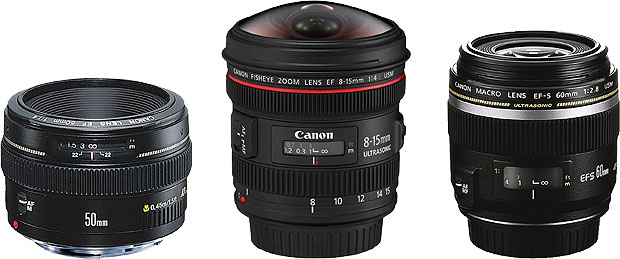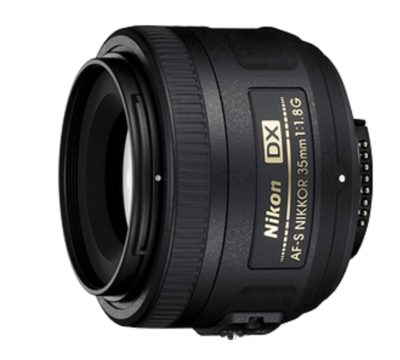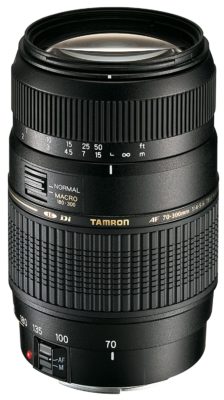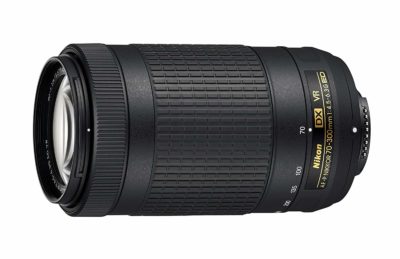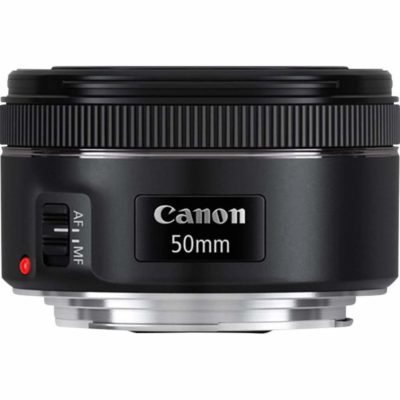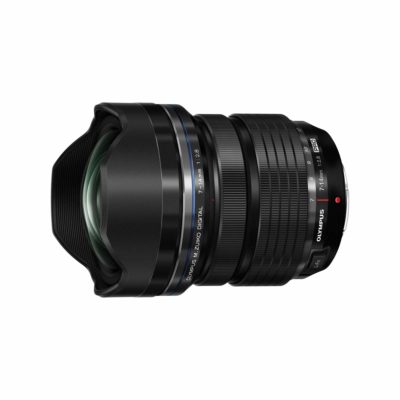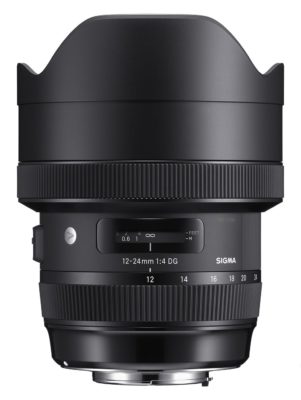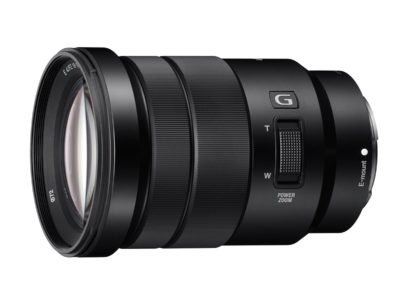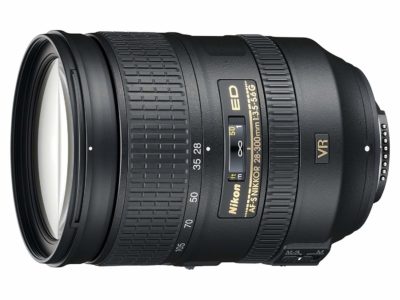8 Best Camera Lenses for Photographers
Whether you would like to capture panoramic, scenic, and stunning images of breathtaking landscapes or detailed close-up photos of wedding shoots or wildlife; a high-quality camera lens makes it ridiculously effortless for you.
It enables you to capture exceptional image quality enriched with colours and precise contrast. It comes equipped with superior optics that allows you to shoot videos even in low-light conditions.
It helps you to fine-tune your photographically skills and enjoy the immersive world of nature and wildlife photography. A high-end lens is essential for capturing sharp and flawless images that are hallmarks of professional photography.
The high-tech camera lens gives you the ultimate creative freedom to freeze in time the timeless memories and jaw-dropping spectacles.
In this review, you will read about how a camera lens works, specifies the buying guide, and types that will help you make the perfect purchase, top 8 camera lens recommendations and FAQs.
Top 8 Best Camera Lenses for Photographers in India
| Product (Best Brands) | Best Price |
|---|---|
How does a Camera Lens work?
A camera lens is an optical lens, or you can say a combination of lenses into just one lens used in the camera. The elements can be produced somehow and can be arranged inside the camera lens to reduce any optical flaws.
With a digital camera, it is not required to buy the most expensive lens to capture amazing photographs. Still, yes, the lens’s quality decides the optical properties needed to capture some bright photographs.
When the light passes through these multiple lens elements, it can reduce the photograph’s quality if the lens is not high-quality.
This is why if you use a low-quality lens, you will not get the results as you are hoping for. To produce good results, no matter what the camera is, the lens is the most important part.
The camera and the sensors are evolving, but the high-quality lens can be used for years with any camera upgrades, only if you use the same brand.
Types of Camera Lenses
There are many different types of lenses available out there, specially designed for various uses under various circumstances.
Standard Lenses
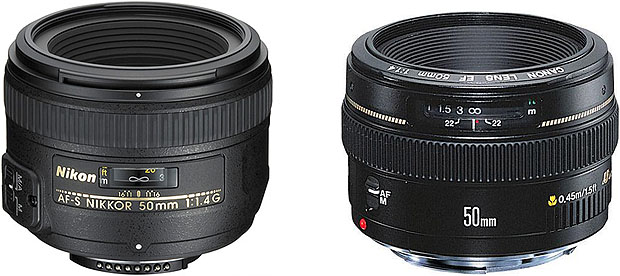 A standard lens is one type of camera lens with a mid-range focal length, around 50mm.
A standard lens is one type of camera lens with a mid-range focal length, around 50mm.
They can produce images that are almost the same as what a normal human eye can see, meaning it produces images that are natural to the viewer.
The standard lens usually has a fixed focal length with a wide aperture. This gives them the advantage of capturing excellent photographs in low light.
These lenses are popularly used for various photography subjects, including landscapes, candid shots, and portraits.
Macro Lenses
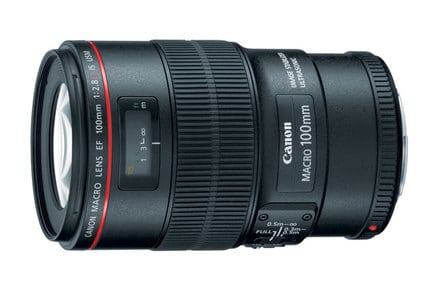 A macro lens is specifically designed for close-up photography. The construction is different in the macro lens than that of the normal lenses, which gives the advantage of capturing sharp photographs with high contrasts.
A macro lens is specifically designed for close-up photography. The construction is different in the macro lens than that of the normal lenses, which gives the advantage of capturing sharp photographs with high contrasts.
This means that they can produce some stunning, eye-catching photographs. Macro lenses are opted to shoot photographs where the subject is at a very close range.
The subjects include insects, plants, animals, and also detailed photographs of everyday objects.
Telephoto Lenses
 A telephoto lens has a long focal length, which can provide a very high level of magnification, allowing photographers to capture the subjects at moderate to long distances.
A telephoto lens has a long focal length, which can provide a very high level of magnification, allowing photographers to capture the subjects at moderate to long distances.
These lenses are big and heavier than all the other types of lenses. However, the lenses are becoming more compact and light-weight with the advancements, making them easy to operate with.
These kinds of lenses are very popular for any photography where you cannot be near the subject you want to capture, including wildlife and any sports events.
They can be used for portrait photography, and the lens produces natural photographs that are not distorted.
Wide Angle Lenses
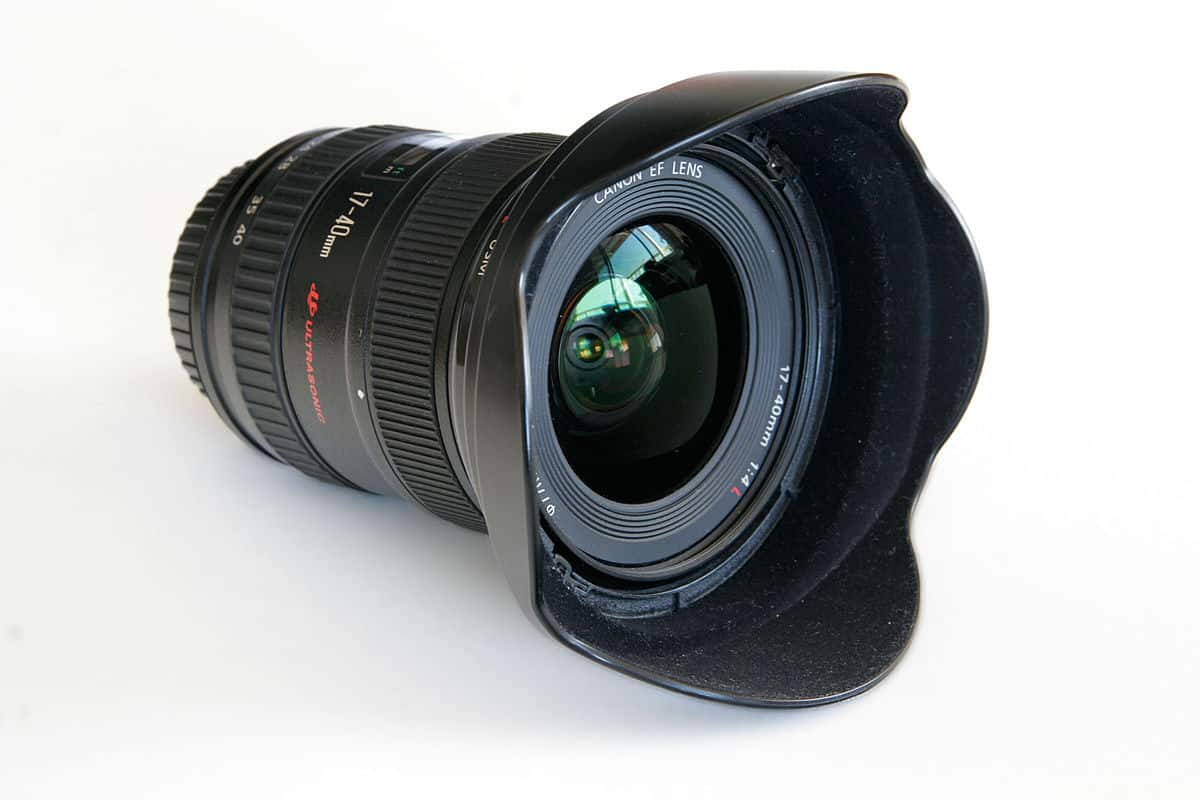 A wide-angle lens is the type of camera lens that has a short focal length. They are capable of producing an angle of view beyond that of standard lenses, which helps capture the most areas in a single shot.
A wide-angle lens is the type of camera lens that has a short focal length. They are capable of producing an angle of view beyond that of standard lenses, which helps capture the most areas in a single shot.
Wide-angle lenses are called the fish-eye lens, capable of capturing at an angle of 180 degrees and produces abstract photographs that are intriguing to the eyes.
The lenses are useful for photographing interiors, landscapes, and any other subjects that do not fit in a normal lens field of view.
Fish-eye lenses are quite popular for taking sports pictures like skateboarding and surfing, giving the photographs a lively feeling without any distortion.
Specialist Lenses
Now comes the specialist camera lenses that cater to fewer photography needs.
It includes tilt lenses and shift lenses, which are especially for perspective control, the soft-focus is for portrait photography, and infrared lenses can capture the light which is out the normal spectrum.
These kinds of camera lenses are used to produce a special effect, which is very limited in photography’s general use. They can be of use only if you are focused on capturing a particular kind of subject, in a specific manner.
Kit Lenses
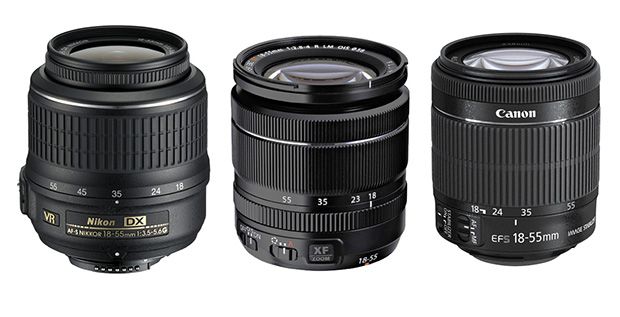 Almost all the entry-level DSLR’s come with either two or more camera lenses, usually called starter kit or the kit lenses. They are generally cheap, so it is good to get started with this type of lenses for photography.
Almost all the entry-level DSLR’s come with either two or more camera lenses, usually called starter kit or the kit lenses. They are generally cheap, so it is good to get started with this type of lenses for photography.
It does not produce top quality photographs as the lenses are slow. It is just a great starter kit for trying your hand at photography and helps you in figuring out which focal lengths best suit and which ones you should consider buying looking at your budget.
Buyers Guide to Camera Lens
Lens mount
Lens mount has several distinctions from manufacturer to manufacturer. The direction in which you rotate the lens to connect it to the camera may also differ. Similarly, there are other such differences in the lens mount. So buy a lens after looking at all these things.
Lens format
It is the size CCD the lens was designed for. There is lens format of ¼”, 1/3, ½”, 2/3 or 1. All these different formats are useful for different purposes, such as for videography you should go for 1/3.
Compatibility
Before you purchase a camera lens, you first have to make sure if the lens will fit your camera. If you have a camera with a cropped sensor size, also known as APS-C, you can choose from a wide range of full-frame and APS-C lenses.
All the entry-level DSLRs are designed with a cropped sensor size. Full frame lenses can be expensive, so APS-C lenses are affordable and smaller and weigh less.
If you have a camera that has a full-frame sensor, then you can only choose from full-frame lenses because only that will work right with your camera type.
If you own an old DSLR model, you can use the lenses on the newly bought camera. It is best to go for high-quality lenses as they last longer and are designed to be compatible with all the future camera models.
Your investment will be worth it and won’t go to waste, as you can go for camera upgrades and use the same lenses. You might also find third-party manufactured lenses that are designed specifically to fit all branded cameras.
Focal Length
Focal length defines the angle of view of the camera lens, which determines how wide the image is. A camera lens with a short focal length produces a wide image, and a camera lens with a longer focal length allows zooming the image for a narrow and close shot.
If you have a longer focal length, then you can zoom in on a distant subject. Almost all the entry-level DSLR cameras come with an 18-55 mm lens, which is a good choice in general.
If you need a lens with more zoom-in power, you should consider going for a telephoto lens. It is typically between 55-300 mm range.
Also, you should keep in mind that a 50mm focal length camera lens will produce different results on a camera cropped sensor than on a full-frame camera. If you are using a cropped sensor camera, then the angle of view will be narrower.
If you attach a 50mm full-frame lens to your cropped-sensor camera, the camera lens will act like an 80mm focal length camera, which depends mostly on the camera brand you are using.
If you are using a Nikon camera, you can figure the equivalent focal length for a full-frame lens on your cropped-sensor camera by multiplying the focal length by 1.5. If you are using a Canon camera, then multiply by 1.6.
Aperture (f-stop)
Every camera lens has an aperture range. It is also known as the f-stop number. It allows the user to control the amount of the scene which should be in focus. If the f-stop number is low, that means only a small area of the scene will be in focus.
This is what gives beautiful portrait shots with blurred backgrounds. The greater the aperture, the more control you will be having over the camera lens.
This means you can maintain faster exposure in low-light conditions. This allows you to shoot photographs in indoor conditions without flash, giving you great photographs captured in evening settings.
If you do not know how to use the aperture, you can always select the auto mode from the settings. Once you get comfortable and familiar with your camera settings, adjust the aperture manually the way you want.
8 Best Camera Lenses for Photographers
1. Nikon AF-S DX Nikkor 35 mm f/1.8G Prime Lens
Nikon AF-S DX Nikkor lens is a lightweight and compact camera lens designed to deliver powerful performance. It is a prime lens that features excellent image stabilization for easily capturing moving objects.
This lens gives great performance even in poor lighting conditions as it is equipped with a maximum aperture of f/1.8 and background blur functionality. It is designed for shooting high-quality images with exceptional clarity through its normal angle of view.
With its rounded 7 blade diaphragm opening, you can make out-of-focus elements to look natural in the captured images. It is an ideal camera lens for capturing stunning landscapes and breathtaking portraits. It gives excellent results with general photography.
- AF-S DX NIKKOR 35mm f/1.8G prime lens shows compatibility with DX-format SLRs
- This lens provides a maximum aperture of f/1.8 that is perfect for portrait photography as it offers full depth-of-field control for blurring out the background and highlighting the subject
- It comes with a rounded 7-blade diaphragm opening for providing natural looks to the out-of-focus elements
- It comes equipped with Aspherical lens elements that remove lens irregularities by utilizing non-spherical glass surfaces. This element improves the image integrity by minimizing the coma and other types of lens aberrations
- This AF lens technology employs a silent wave motor feature that provides extremely quiet, fast, and accurate auto-focusing
- This lens has M (manual) mode and M/A mode (autofocus with manual override) that allows you to switch between them quickly by turning the focus ring
- It comes with a rear focusing system that provides a smoother and faster auto-focusing system. It helps in eliminating the changes in the physical length during focusing
- When this lens is mounted on a DX-format SLR, It provides the 35mm picture angle that is equivalent to the focal length of 50mm
- The lens comes with a rubber seal for reducing the moisture ingression around the mount. It can focus down up to 0.3 meters
- This lens produces finely detailed and impressive images at all the apertures. It is designed to focus accurately and quickly
- It has a fast and maximum aperture that allows capturing hand-held images in low light levels while keeping the fast shutter speeds for avoiding blur from the subject motions
- It comes with Nikon super integrated coating (SIC) that boosts the light transmission efficiency and provides colour consistency with reduced flare
- This lens accepts 52mm filter attachments and provides close focusing up to 1 foot for achieving creative versatility and varied perspectives.
- It is a compact and lightweight lens that is engineered for high-level photography. It helps you to capture exceptional images with superb clarity
- It is a genuinely inexpensive, fast, and standard prime lens that is designed for digital SLRs
- It is a perfect camera lens for the Nikon DSLR camera for general, travel, and environmental portrait photography
- The maximum aperture of f/1.8 makes it possible to capture images in low-light conditions
- This lens provides exceptional picture quality and high reproduction capability at an affordable price
- Its optical design provides different looks and feels to the images captured with zoom lenses
- The dimensions of this lens are ideally suitable for landscape shooting and discrete snapshots by utilizing a picture angle comparable to that of the human eye
- It provides sharper images as compared to typical DX standard zoom lenses like Nikon AF-S 18-200mm F3.5-5.6 DX VR or Nikon AF-S 18-55mm F3.5-5.6 DX VR
- This lens show lateral and longitudinal chromatic aberration that may give undesirable purple fringing effects if the photographer is not careful while capturing images.
2. Tamron A17E AF 70-300mm F/4-5.6 Di LD Macro Telephoto Zoom Lens
Tamron AF-70-300mm f/4-5.6 is a Di LD macro telephoto 1:2 zoom lens designed for a digital SLR camera (A17E). It is a compact, high-quality tele-zoom lens that combines excellent optical qualities and high mechanical qualities.
This Di lens is designed to be used on a full-frame camera or a digital APS-C sized camera. It is ideally suitable for complementing the standard kit lenses.
- It shows compatibility with Canon EF camera models
- It features a maximum aperture of F4.0-5.6 and provides a focal length of 70-300mm
- It comes with 9 diaphragm blade number and features 9 groups and 13 elements of lens construction
- This lens features a ‘macro switchover’ mechanism that provides a minimum focus distance of 0.95 m inside the 180-300mm focal length range
- With this lens, you can fill the entire frame with your subjects of approximate size 5cm x 7cm while maintaining a maximum magnification ratio of 1:2
- It provides exceptional and entertaining photography with its 300mm tele-end
- It features a digitally integrated design that makes it suitable for adapting to the high-end requirements of digital SLR cameras
- It features low dispersion (LD) glass for providing greater lens sharpness. This feature compensates for chromatic aberration at long focal lengths and lateral chromatic aberration at the short focal length
- It measures 76.6 mm in diameter and 116.5 mm in length. It is a lightweight lens that weighs 458 grams
- It is ideally suitable for capturing similar sized images of objects, flowers, and insects
- The LD glass elements help in minimizing the chromatic aberration
- It is an ideal lens for bringing closer the wildlife subjects or distant sports subjects into clear focus
- Its standout macro function allows you to bring close range and small subjects into clear focus
- It can be used on efs mounting Canon DSLR cameras
- It does not feature image stabilization functionality
- It shows chromatic aberration and purple fringing
3. Nikon AF-P DX NIKKOR 70-300 mm
Nikon AF-P DX NIKKOR 70-300 mm picks up from where your 18-55mm lens leaves you to cover distant objects easily if you are keen on photography and videography of wildlife and nature.
With phenomenal clarity and precision, you can easily shoot faraway objects. There are many more features that come along with this product. Let’s have a look at them.
- It is a 70-300mm lens with super-telephoto zoom power that can reach even the faraway objects easily
- The maximum aperture is f/4.5, to6.3, and the Minimum aperture is f/22, to 32
- lThe minimum focus distance of this lens is 1.1m (3.7ft)
- This product has compatible formats FX, DX in DX crop mode
- The VR image stabilization feature makes sure that the photos you click are sharp, and the videos you shoot are steady
- It can also enhance the low-light capabilities
- This is Compatible with Nikon D5300, D5500, D5600, D3300, D3400, D7200
- The lens works in ultra-fast mode
- The autofocus is near silent, along with a new pulse motor that can focus fast. This feature comes in great use while shooting videos, and you need to focus on subject to subject
- The weight of the lens is just 415g
- The superb optics and the telephoto view of this lens are great for photography skills development as well as shooting videos
- It is ideal for those who have an interest in wildlife and nature photography
- It does not have a hood or a case to keep it in
4. Canon EF50MM F/1.8 STM Lens
For all those photographers who want to expand their creativity with their EOS camera, Canon EF50MM F/1.8 STM Lens is one of the best options for them.
It can click sharp and steady pictures, even in low light capabilities, making it one of the preferable options.
Let us have a look at the other features of this product.
- The digital era coating suppresses flaring and ghosting
- The lens has a rugged metal mount with a new exterior design used. It is fully compatible will all ranges of DSLR cameras of Canon
- If you reduce the minimum focusing distance (45 cm -> 35 cm), maximum magnification can be increased (0.15x -> 0.21x
- The maximum aperture of f/1.8 enhances its ability in the low light and also increases the sharpness while clicking pictures and also during videography
- The circular 7-blade design is capable of clicking beautiful bokeh blur pictures, which enhances the pictures more
- The EF 50mm f/1.8 STM’s performance is exceptional, along with a stepping motor that delivers silent Movie Servo AF for movies and smooth AF for stills as well. This makes your subject stand out as it becomes the clear focus of your shots
- The wide aperture lets in 8x more light in as compared to the other standard zoom lens
- By using STM (gear type), AF drive noise is quieter than the existing products DC motor
- It is a perfect camera for portraits, nightlife, and even action sequence photography
- The warranty period is not included
5. Olympus M.Zuiko Digital ED 7-14mm f/2.8
Olympus M.Zuiko Digital ED 7-14mm f/2.8 is a wide-angle lens with a focal length equivalent of 12 mm – 28 mm. It has a fixed aperture of f/2.8, which is pretty fast at all focal lengths.
It is dustproof and comes with weather sealing. It does not come with image stabilization, which means you cannot take handheld shots.
- It is dustproof, freezeproof and can resist harsh weather conditions
- The built-in lens helps in producing no flare photos which also protects the camera lens from any accidental damage
- It has a seven-blade rounded diaphragm that produces smooth bokeh quality photographs.
- The weight of the item is 535 grams
- The minimum focal length is 7 mm
- It is weather resistant which means it is dust, water and freezeproof
- Produces great image quality
- It does not produce distorted images due to the sharp wide angles
- It is ideal for professional use due to high brightness
- It is compact in design
- It does not have image stabilization
- The lens is a bit heavy
6. Sigma 12-24mm F4 DG HSM Art
The Sigma 12-24mm F4 DG HSM Wide-angle Zoom lens is designed to provide minimum distortion. The lens has FLD glass elements which provide stunning image quality, and the updated Hyper Sonic Motor (HSM) makes use of 1.3X the torque for a quick auto-focus.
It is equipped with a constant focal length of f4, allowing you to capture photographs in low light and produce no distortion, flaring and ghosting. The edge to edge performance gives sharp photographs with high-contrasts.
It can be used for various photography styles, which is perfect for landscapes, architecture, interior photography, and much more.
- This camera lens is designed to support the full-frame format and also can be used with APS-C models to offer an equivalent focal length of 19.2-38.4mm
- Constant aperture of F4 provides performance with consistency throughout the range of zoom
- The 80mm large diameter is incorporated within the camera lens to correct chromatic aberrations and ensure high-quality sharpness, clarity, and limits vignetting
- The multi-layer coating allows minimizing the flare and produces high contrast images, even in backlit conditions
- The weight of the camera lens is 680 grams
- Updated AF system with 1.3X torque
- The dimensions of the lens are (W x H x D) – 11.9 x 8.4 x 8.4 cm
- It can survive weather conditions equivalent to a snowstorm.
- It produces sharp and high-contrast output
- Quick and accurate auto-focus
- It does not have a self-timer
- It just has an F4
7. Sony 18-105 mm f/4 OSS G
Sony 18-105 mm f/4 OSS G has an equivalent focal length of 27 mm – 158 mm and has a fixed aperture with the focal length, ideal for travel photography.
As it is a G series camera lens, it has a high-quality lens primarily designed for Sony’s APS-C type sensor cameras. It is not recommended for full-frame cameras. It has an affordable price, which makes it a great choice.
- The weight of the item is 481 grams
- The dimensions of the product are ( W x H x D) – 11 x 7.8 x 7.8 cm
- The minimum focal length is 18 mm
- The camera lens has a 76 degrees angle of view
- It has a high performance with the E-Mount lens
- The zoom range is from 27 – 158 mm
- It has a constant f4 aperture through the zoom range
- It has image stabilization which makes it great for handheld shots
- It has internal zooming and focusing features
- Produces great bokeh photographs
- It does not have a self-timer
8. Nikon 28-300mm f/3.5-5.6G VR
Nikon 28-300mm f/3.5-5.6G VR is ideal for full-frame Nikon cameras. This lens covers a wide range of focal lengths, which has a reasonably fast aperture and offers great image stabilization.
This is a superzoom lens with 10.7 x zoom, capturing distant objects easily producing high-quality images.
- It is an ideal Nikon camera lens
- The minimum focal length is 28 mm
- It is an FX zoom lens that has a zoom ratio of 10.7
- It consists of two ED glass which three aspherical lenses that produce a high resolution with contrasts photographs
- It has a Silent Wave Motor which is a fast and quiet auto-focus feature
- For image stabilization, it has Vibration Reduction 2
- The weight of the lens is 798 grams
- The dimensions of the product are (W x H x D) – 11.5 x 8.3 x 8.3 cm
- The images are sharp throughout the zoom range
- It has optical image stabilization
- It does not have a self-timer
Frequently Asked Questions
1. How do you know if a camera lens is good?
- Most people think that while buying a camera, you should mainly look at its body, but you should never compromise on the lenses’ quality. A good camera is one that has lenses that provide sharp and steady images
- The lenses should not have scratches on the glass element, which would affect the images’ quality. Often, you touch your fingers on the lenses which produce finger marks on the lens
- Lenses should be coated with non-reflective optical material. This would minimize light reflection and the resulting lens flare.
- The lens should not be stored in a dark and moist place as it would result in the formation of fungus over it
- You should keep your lens away from dust and debris
2. What lenses should I buy for my DSLR?
Ultra Wide Angle Lens (less than 24 mm) should be more preferable while buying a lens for your DSLR.
3. How do you defog a camera lens?
You can use a soft microfiber cloth to clean the front and the back of the camera lens.
4. What do the numbers mean on a camera lens?
The numbers which are written on the camera is the:
- The focal length is the distance from the object to the camera sensor itself.
- Lens diameter means the diameter of the lens.
- The aperture means how much light you want to hit the camera’s sensors.
Conclusion
A high-end camera lens makes pro-grade photography a breeze. It comes equipped with numerous advanced features that give you many perspectives for capturing the images or recording the videos. It gives new dimensions to your photography skills.
With such a camera lens, you can produce images with high-contrast and sharp outputs. Whether you are a beginner in the world of photography or a seasoned photographer, a camera lens works wonders for you.
Our favourite three are Nikon AF-S DX Nikkor 35 mm f/1.8G Prime Lens, Tamron A17E AF 70-300mm F/4-5.6 Di LD Macro Telephoto Zoom Lens and Canon EF50MM F/1.8 STM Lens.
The camera lens makes it easy for you to capture the vibrant nightlife moments and pursue portrait photography. It helps you to deliver artistic excellence even in harsh weather conditions with excellent image stabilization properties.
Adds immense power to your camera with a sophisticated camera lens and unleash your pro-grade photography talent anytime and anywhere.





